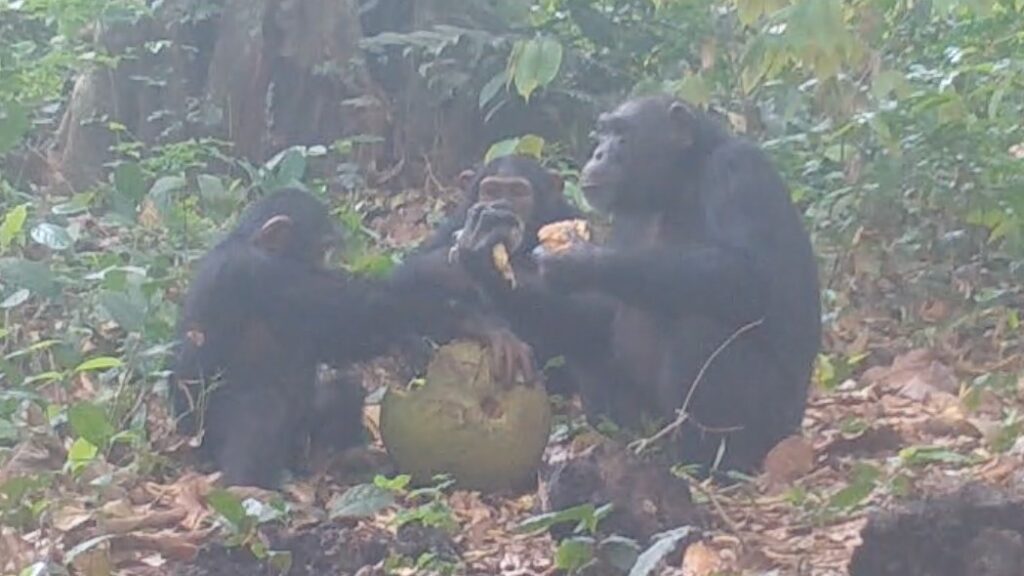
Chimps have been spotted sharing alcoholic food for the first time, hinting that ancient ape behaviors gave rise to social drinking in humans.
Researchers filmed the boozing chimpanzees (Pan troglodytes) gorging on fermented fruit in West Africa as part of a new study exploring alcohol consumption in one of our closest living relatives. The footage is the first evidence that nonhuman great apes consume alcohol together, supporting the idea that social aspects of consuming alcohol are deeply rooted in the ape family tree.
Humans have a history of gathering together to eat, drink and be merry. This feasting behavior has a number of social benefits and can help boost social bonds — though drinking alcohol also carries health risks. Now, the footage of chimps sharing fermented fruits has left researchers wondering whether chimps get similar social benefits from consuming alcohol in a group.
“Chimps don’t share food all the time, so this behaviour with fermented fruit might be important,” study co-author Kimberley Hockings, an associate professor in conservation science at the University of Exeter in the U.K., said in a statement. “We need to find out more about whether they deliberately seek out ethanolic [alcoholic] fruits and how they metabolise it, but this behaviour could be the early evolutionary stages of ‘feasting’.”
The researchers published their findings Monday (April 21) in the journal Current Biology.
Related: ‘Contagious’ peeing may have deep evolutionary roots, chimp study suggests
Alcohol consumption is likely common in the natural world. Lots of wild foods, including fruit, sap and nectar, contain the kind of alcohol humans put in drinks (ethanol) and thus will be ingested by many animals, including primates.
Humans have been producing and drinking alcoholic beverages for around 9,000 years. However, our ancestors — and the ancestors of chimps — developed an enhanced ability to metabolize alcohol around 10 million years ago. This adaptation suggests that alcohol consumption is an ancient ape behavior.
To learn more about how chimpanzees consume alcohol, the researchers observed chimps eating naturally fermenting fruit from African breadfruit trees (Treculia africana) in the Cantanhez National Park in Guinea-Bissau. The team used camera traps to film the chimps eating and analyzed the alcohol content in the fruit.
The researchers observed the chimps sharing African breadfruit on 10 separate occasions and found that 90% of this shared fruit contained alcohol. The alcohol content wasn’t high by human standards, with a maximum of 0.61% alcohol by volume (ABV) — a beer is usually around 5% ABV. However, the impact of alcohol on a chimp’s metabolism is unknown, and they might not need as much as we do to feel a buzz.
A chimp’s diet can be up to 85% fruit, so if plenty of that is fermented, then they may be consuming significant amounts of alcohol. That said, the researchers noted that the chimps probably aren’t getting drunk, as that would be detrimental to their survival chances, according to the statement.
The study also highlighted that chimps gain benefits from consuming fermented fruit that have nothing to do with alcohol consumption. For example, the exterior of fermented fruit is softer than less ripened fruit, so chimps find it easier to open and eat.
While the researchers said their study supports the idea that alcohol consumption is rooted in ape evolutionary history, they noted that more work is needed to fully understand the social side of alcohol consumption.
